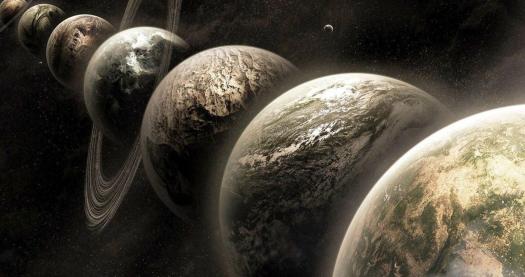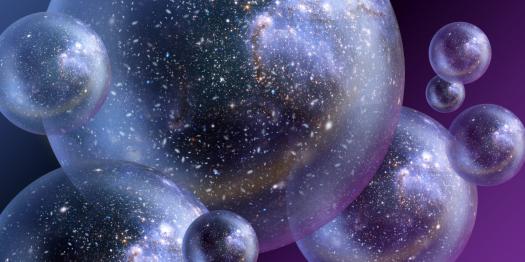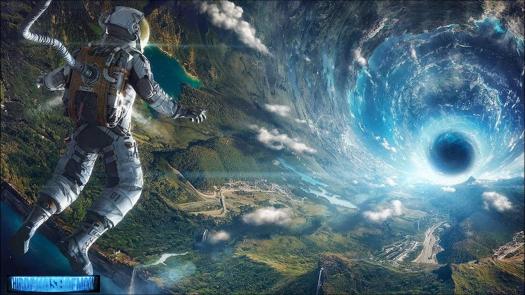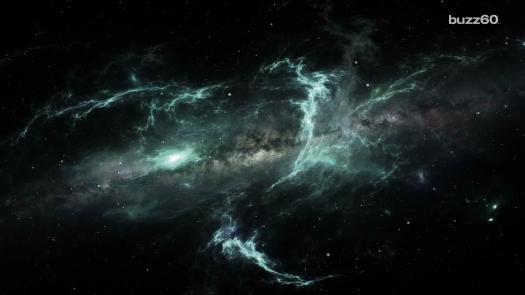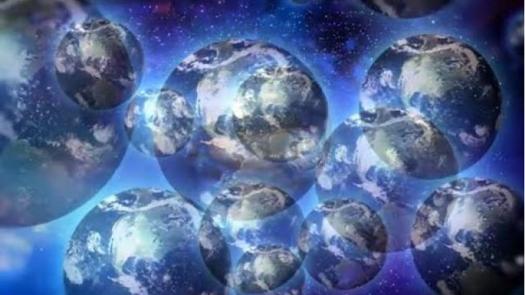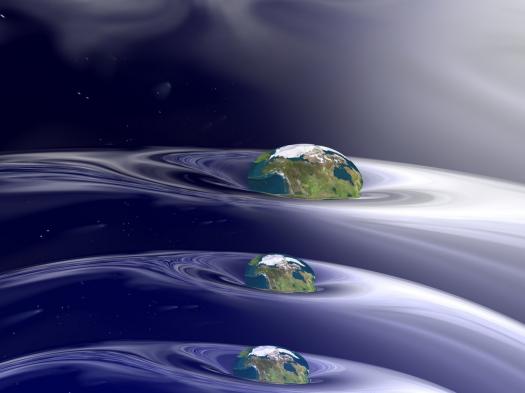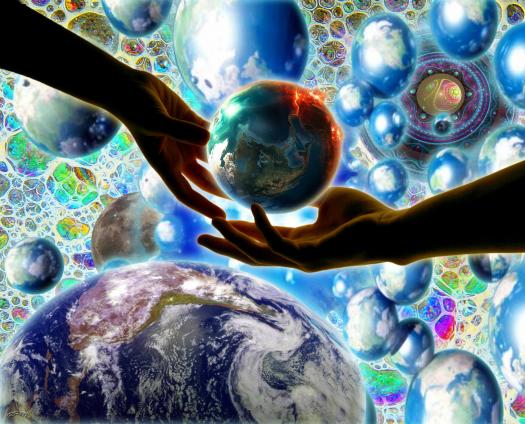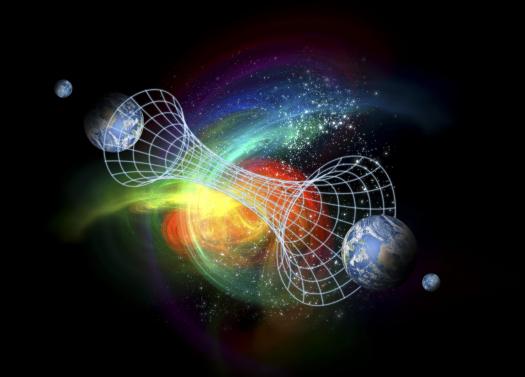Parallel Universes Test

Are you versed in the knowledge of the universe? Think about it, a parallel universe means you're probably a Billionaire somewhere and other places, war has taken over and you're good soldier. As a matter of fact, there's a universe where you score 100 percentage on this quiz too
The possibilities are simply just endless when you really look at it. That said, here, we talk about the definitions as a whole.
- 1.
An account of possible worlds according to which they are all just as real as the actual world is referred to as?
- A.
Absolute universe
- B.
Modal realism
- C.
Multiverse
- D.
Alternate world
Correct Answer
B. Modal realismExplanation
Modal realism is the correct answer because it refers to an account of possible worlds where they are all considered equally real. According to modal realism, all possible worlds exist and are just as real as the actual world. This concept suggests that there are countless parallel universes or alternate worlds, each with its own set of possibilities and events. Modal realism is often discussed in philosophy, particularly in the context of modal logic and metaphysics.Rate this question:
-
- 2.
A construct in metaphysics to bring rigor to talk of logical possibility is a?
- A.
Multiverse
- B.
Modal universe
- C.
Possible world
- D.
Universe
Correct Answer
C. Possible worldExplanation
A possible world is a construct in metaphysics that is used to bring rigor to discussions about logical possibility. It refers to a hypothetical world or reality that could have existed or could exist, but may not necessarily correspond to our actual world. Possible worlds are often used to explore different scenarios and evaluate the truth or possibility of various propositions or statements. They allow for the examination of different logical possibilities and help in analyzing the relationships between statements and their truth values.Rate this question:
-
- 3.
A spiritualistic account as alternatives to the focus world is referred to as?
- A.
Order
- B.
Probable world
- C.
Multiworld
- D.
Universe
Correct Answer
B. Probable worldExplanation
A spiritualistic account as an alternative to the focus world is referred to as a "probable world". This suggests that in spiritualistic beliefs, there are multiple possible worlds or realities that exist alongside our own. These probable worlds may be seen as potential outcomes or parallel dimensions that can be accessed or experienced through spiritual practices or beliefs.Rate this question:
-
- 4.
A self-contained separate reality coexisting with the real world is?
- A.
Modal world
- B.
Parallel universe
- C.
Future
- D.
Order
Correct Answer
B. Parallel universeExplanation
A parallel universe refers to a self-contained separate reality that exists alongside our own real world. It is a hypothetical concept that suggests the existence of multiple universes, each with its own set of physical laws and conditions. In a parallel universe, events and outcomes may differ from what we experience in our reality. This idea is often explored in science fiction and theoretical physics, offering a fascinating concept of alternative realities that exist alongside our own.Rate this question:
-
- 5.
A collective virtual shared space is called?
- A.
Multiverse
- B.
Probable world
- C.
Metaverse
- D.
Universe
Correct Answer
C. MetaverseExplanation
A collective virtual shared space is called the metaverse. This term refers to a virtual reality space where users can interact with a computer-generated environment and other users in real-time. It is a collective space because multiple users can participate simultaneously, and it is virtual because it exists in a digital realm. The metaverse is often used in gaming, social networking, and other online platforms to create immersive and interactive experiences for users.Rate this question:
-
- 6.
The set of rules that describes the interactions of these particles is the?
- A.
Unification theory
- B.
Proponent theory
- C.
Standard Model
- D.
Theory of everything
Correct Answer
C. Standard ModelExplanation
The correct answer is the Standard Model. The Standard Model is a set of rules and principles that describes the interactions between particles in the universe. It encompasses three of the four fundamental forces (electromagnetic, weak, and strong) and explains the behavior of elementary particles such as quarks, leptons, and gauge bosons. It has been successful in predicting and explaining a wide range of experimental observations in particle physics. However, it does not include gravity and is considered incomplete, leading scientists to search for a more comprehensive theory, such as the Theory of Everything.Rate this question:
-
- 7.
Parallel universes are also called?
- A.
Otherworlds
- B.
Absolute universes
- C.
Alternate universes
- D.
Multiverses
Correct Answer
C. Alternate universesExplanation
The correct answer is "Alternate universes". Parallel universes are often referred to as alternate universes because they are believed to exist alongside our own universe, each with its own set of physical laws and conditions. These alternate universes may be similar to ours or vastly different, and they are theorized to exist as part of the multiverse, which encompasses all possible universes.Rate this question:
-
- 8.
The miscellaneous distinct universes within the multiverse are called?
- A.
Outer spaces
- B.
Parallel universes
- C.
Underworlds
- D.
Planets
Correct Answer
B. Parallel universesExplanation
Parallel universes refers to the concept of multiple universes coexisting simultaneously, each with its own set of physical laws, dimensions, and possibilities. This idea is often explored in science fiction and theoretical physics. It suggests that there could be countless other universes, similar or vastly different from our own, existing alongside our own universe. These parallel universes may have different versions of ourselves and different outcomes for events that have occurred in our universe.Rate this question:
-
- 9.
A hypothetical set of various possible universes is called?
- A.
Other Side
- B.
Underworld
- C.
Outer Space
- D.
Multiverse
Correct Answer
D. MultiverseExplanation
A hypothetical set of various possible universes is called a multiverse. The term "multiverse" refers to the concept that there may exist multiple universes, each with its own set of physical laws and conditions. This idea is often discussed in the context of theories such as parallel universes or alternate realities. The term "multiverse" encompasses the notion that our universe is just one among many possible universes, each with its own unique characteristics and possibilities.Rate this question:
-
- 10.
An idea about the basic substance of the universe is the?
- A.
M-theory
- B.
Theory of everything
- C.
Unification
- D.
Law of order
Correct Answer
A. M-theoryExplanation
M-theory is a theoretical framework in physics that suggests the existence of multiple dimensions and universes. It attempts to unify different versions of string theory and provides a possible explanation for the basic substance of the universe. M-theory proposes that the fundamental building blocks of the universe are not particles but tiny vibrating strings. These strings can exist in multiple dimensions, and their vibrations determine the properties of particles and the forces between them. Therefore, M-theory offers a potential understanding of the underlying structure of the universe and its fundamental constituents.Rate this question:
-
Quiz Review Timeline +
Our quizzes are rigorously reviewed, monitored and continuously updated by our expert board to maintain accuracy, relevance, and timeliness.
-
Current Version
-
Mar 20, 2023Quiz Edited by
ProProfs Editorial Team -
Apr 08, 2018Quiz Created by
Timmy198



